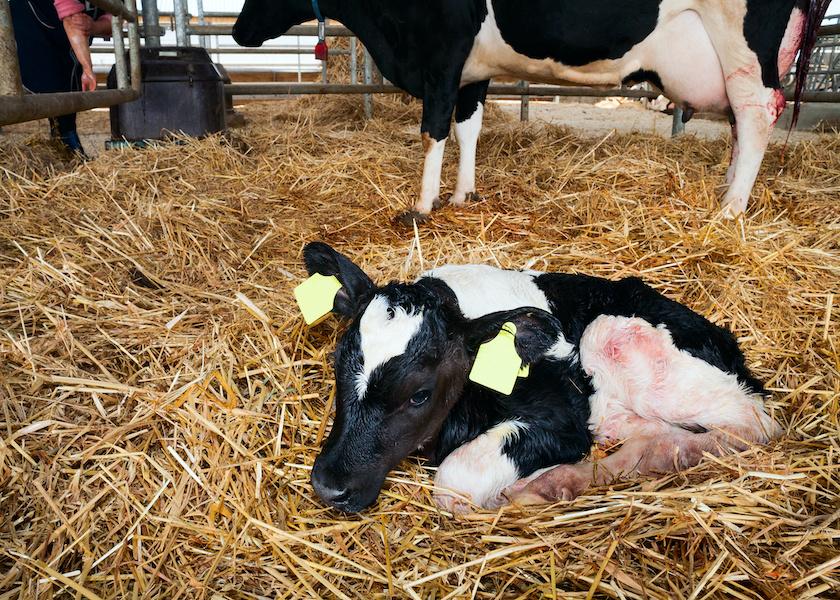“Hybrid” Approach Helps Maximize Colostrum Quality

When it comes to deciding whether to use readily available maternal colostrum or a commercially available colostrum replacer to help launch early life calf immunity, it doesn’t have to be an all-or-nothing proposition. According to two presenters at the 2022 Dairy Calf and Heifer Association Annual Conference, you can – and probably should – use both.
Maternal colostrum is the ideal way for calves to achieve passive transfer of immunity in newborn calves, but it may fall short in a variety of ways, according to Adam Geiger, Business Development Manager with Zinpro Performance Colostrum.
Geiger and Dave Cook, Technical Service Manager for Milk Products, shared that boosting maternal colostrum with commercial colostrum replacer could give calves the best of both worlds when it comes to maximizing passive transfer of immunity.
They said this approach will aid producers in achieving high levels of circulating IgG in newborn calves. This is especially critical given recent recommendations from the USDA and industry experts that producers should strive for higher levels of circulating IgG compared to the standards of years past.
“The decision to feed high-quality, clean maternal colostrum is perhaps the most important decision you can make for the health and survivability of every calf,” declared Geiger. He added that colostrum-supported calf health and performance -- which always has been a high priority for dairy replacement heifers -- has taken on equal significance for calves headed to feedyards, many of which are now beef-on-dairy crossbreds.
Citing data that showed significant declines in both health and gain efficiency of feeder calves that lacked adequate passive transfer of immunity, Geiger and Cook emphasized the importance of establishing colostral immunity in every newborn calf.
“Many feeder calves are transported early in life to be raised at a grower facility,” noted Cook. “The boost in vitality and disease protection, shown to be provided by higher levels of passive immunity, is of paramount importance.”
Cook advised testing individual batches of colostrum with a digital Brix scale to assess quality. Brix readings of > 24 would indicate excellent-quality colostrum containing well over 50 g/L of IgG, which should be fed at a dose of 3-4 liters, for a total of 150-200 g/L IgG.
But if the Brix reading falls in the range of 18-24, that colostrum can be fortified by adding 50 grams of IgG via a high-quality, powdered colostrum replacer and raise the quality of good or marginal colostrum to excellent. For a typical, 500-gram pouch of colostrum replacer containing 150 grams IgG, that would be a third of the bag, or 166 grams of powder.
They recommended a simple enrichment process of whisking the powder directly into warm (100-105°F) colostrum without added water. The powder can be added to fresh colostrum or as it leaves the pasteurizer.
If colostrum is being frozen for later use, the powder can be mixed in before freezing, so the dose is ready to go upon thawing. The colostrum powder should easily dilute into solution and have an IgG content a least 30% to be considered an effective option for supplementing maternal colostrum.
The duo cited multiple benefits to taking this “hybrid” approach to colostrum feeding, including:
- Greater consistency of delivery of desirable IgG levels to every calf.
- Maternal antibodies from dry-cow vaccinations and organisms native to the herd are retained and delivered to each calf.
- Reduced cost compared to feeding strictly colostrum replacer. The cost of boosting maternal colostrum will be 1/3 the cost of complete maternal colostrum replacement. “Blanket” boosting every batch of maternal colostrum without testing produces an approximate 3:1 return on investment (ROI), while the “test and supplement when needed” approach yields a 15:1 ROI.
The added layer of IgG protection should not be viewed as an excuse to let up on colostrum protocols, however. “You first need a good colostrum program to have a good colostrum supplementation program,” advised Cook.
With excellent dry-cow vaccination and colostrum protocols in place, “supplementing maternal colostrum with high-quality colostrum replacer is a practical tool we have at our disposal to deliver IgG and push up immunity levels in calves,” declared Geiger.







